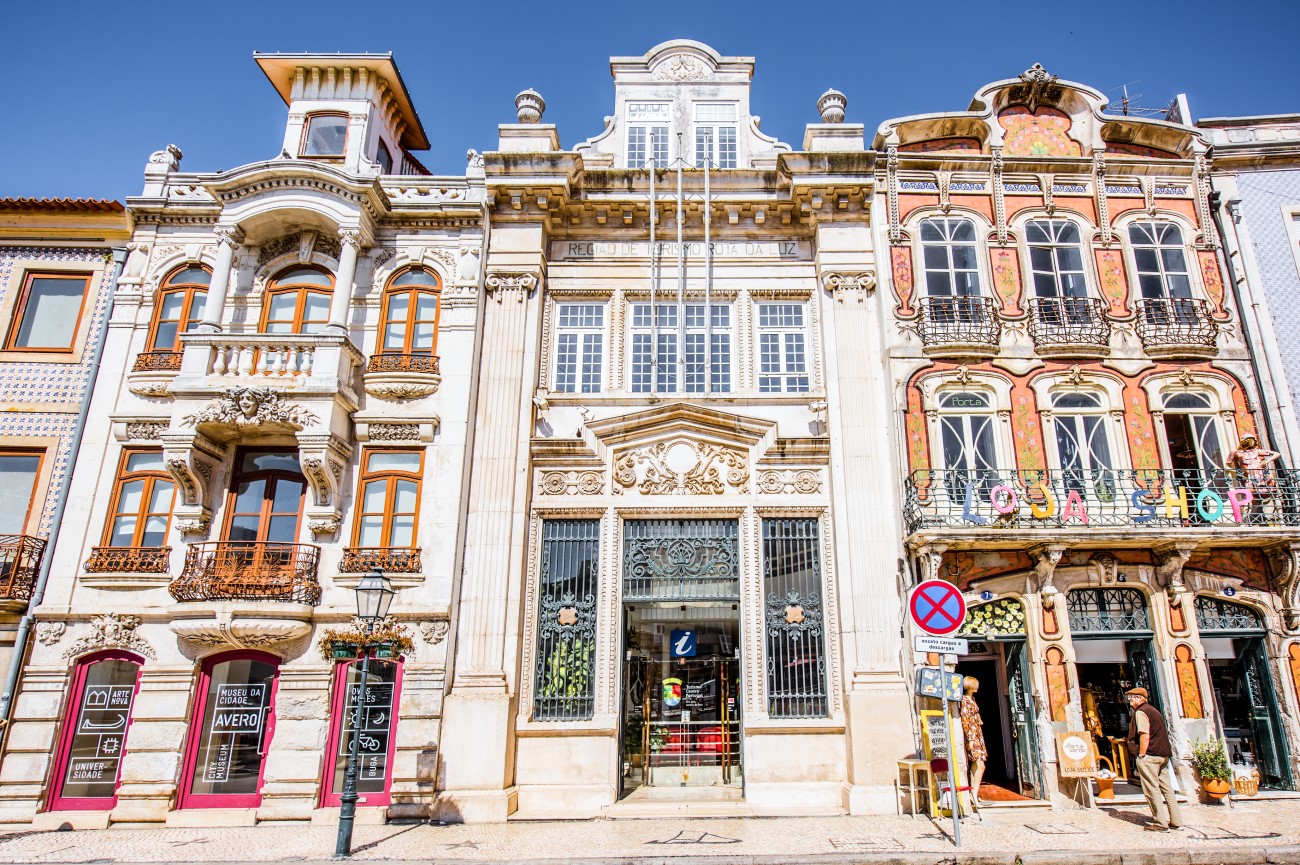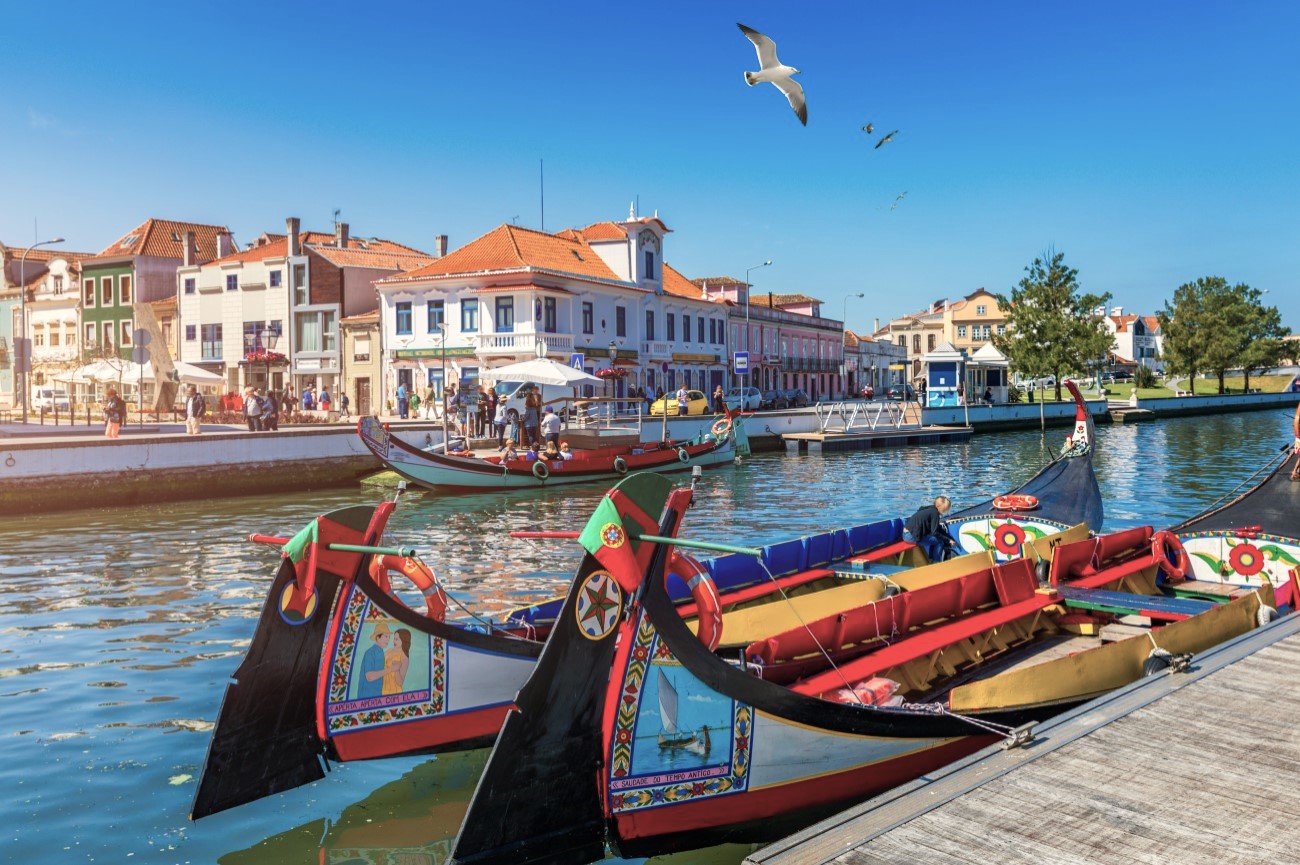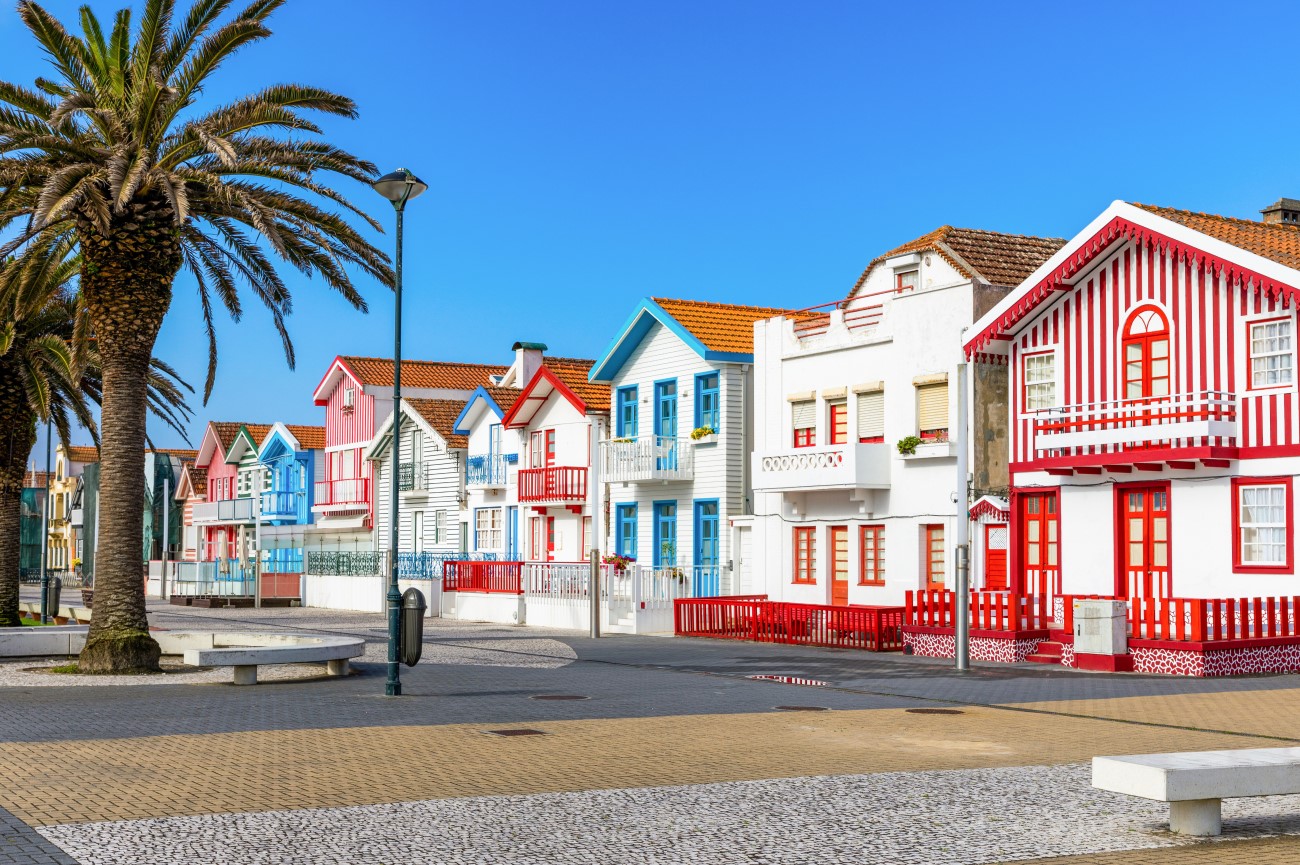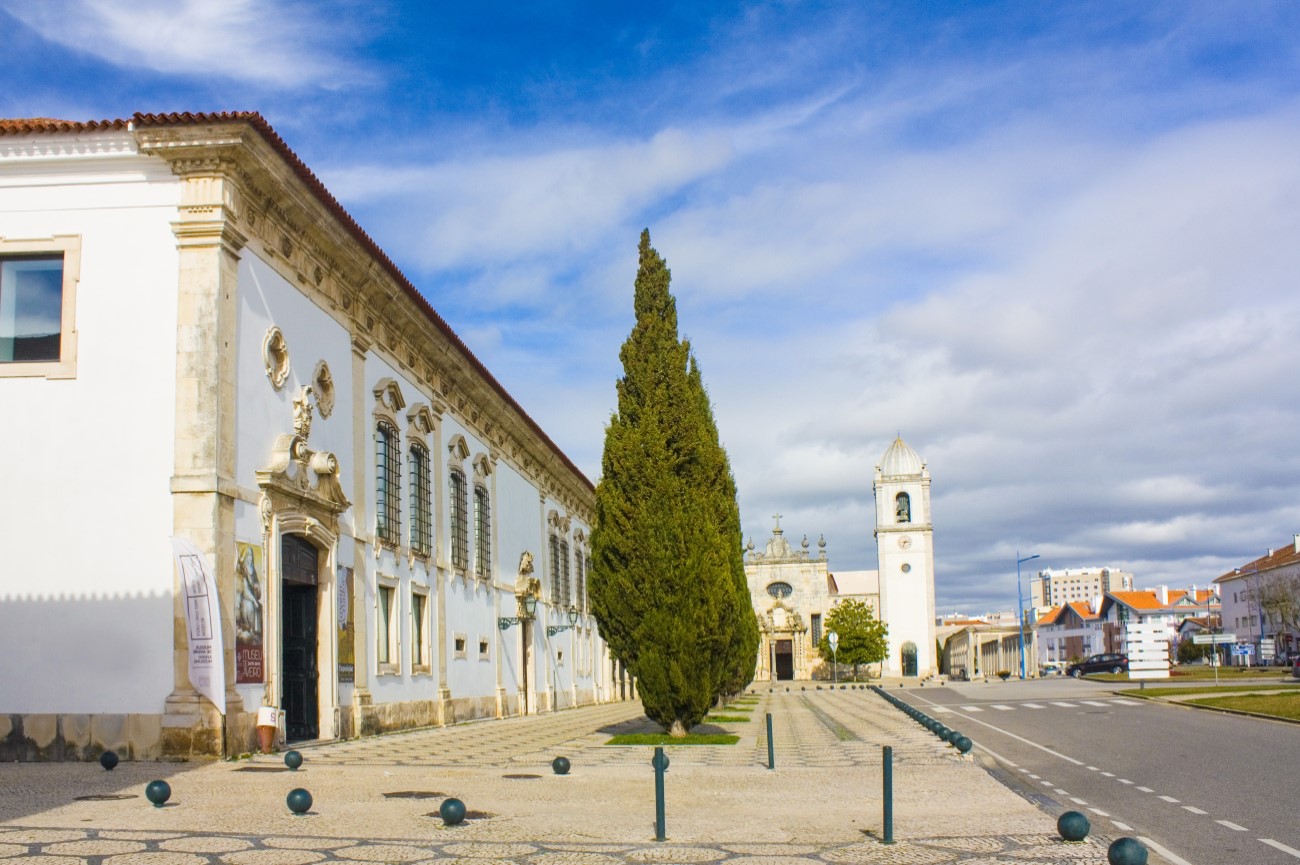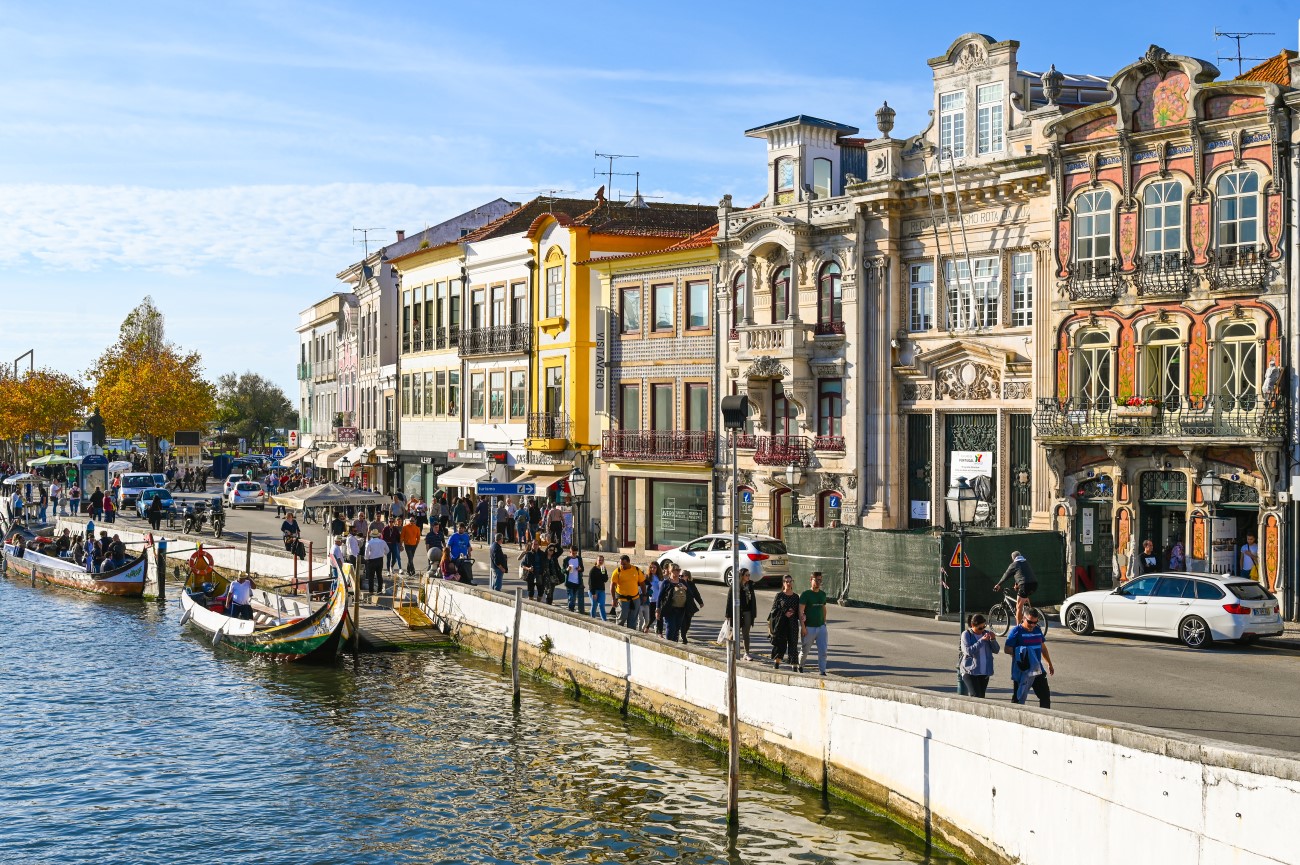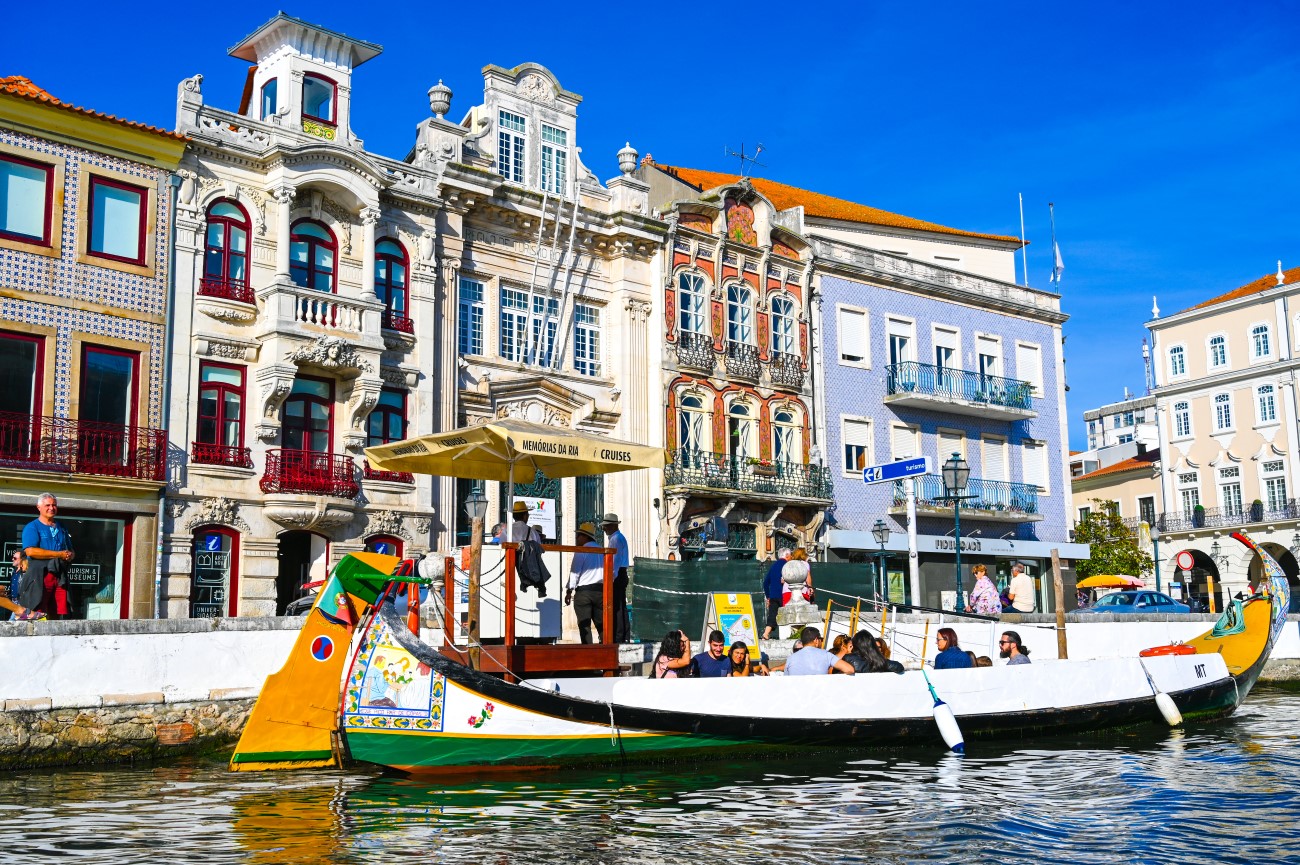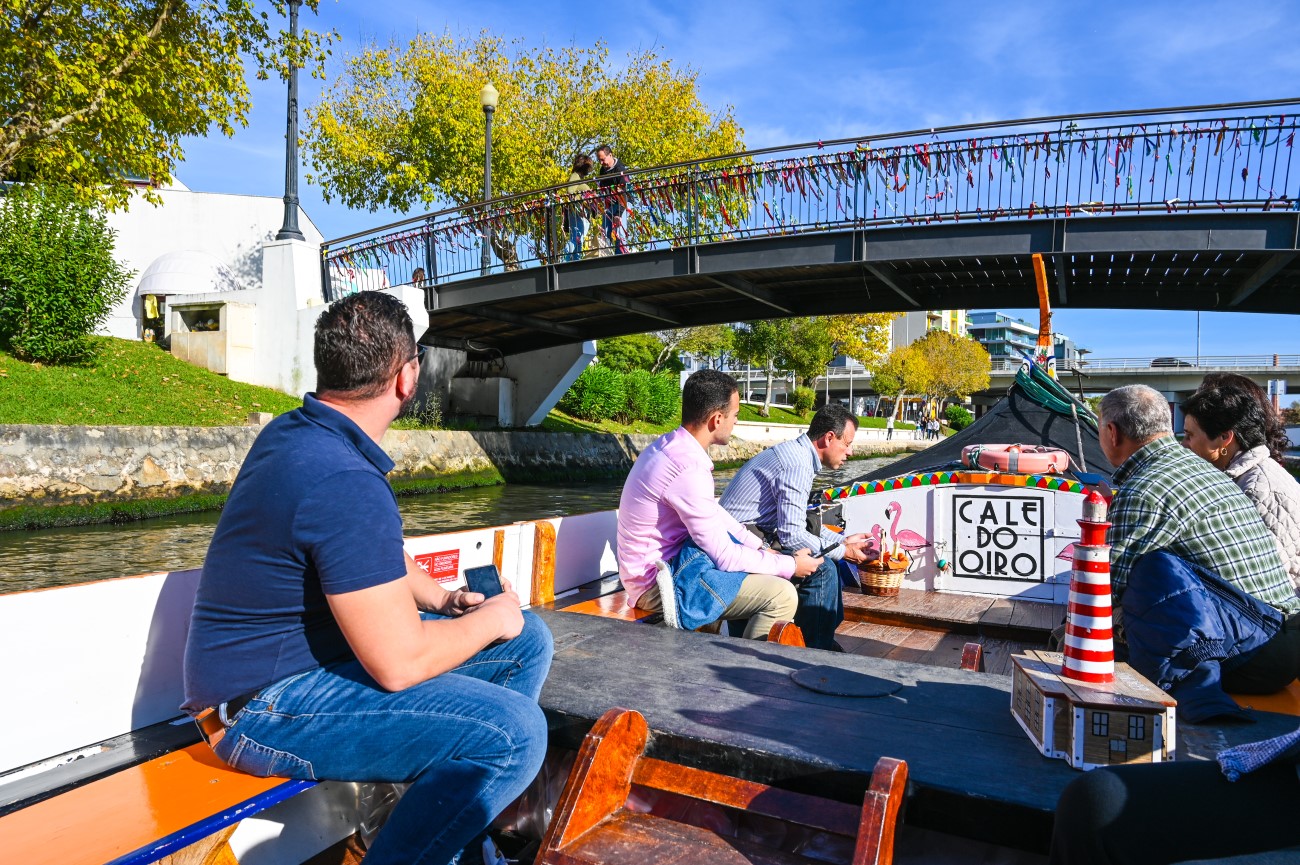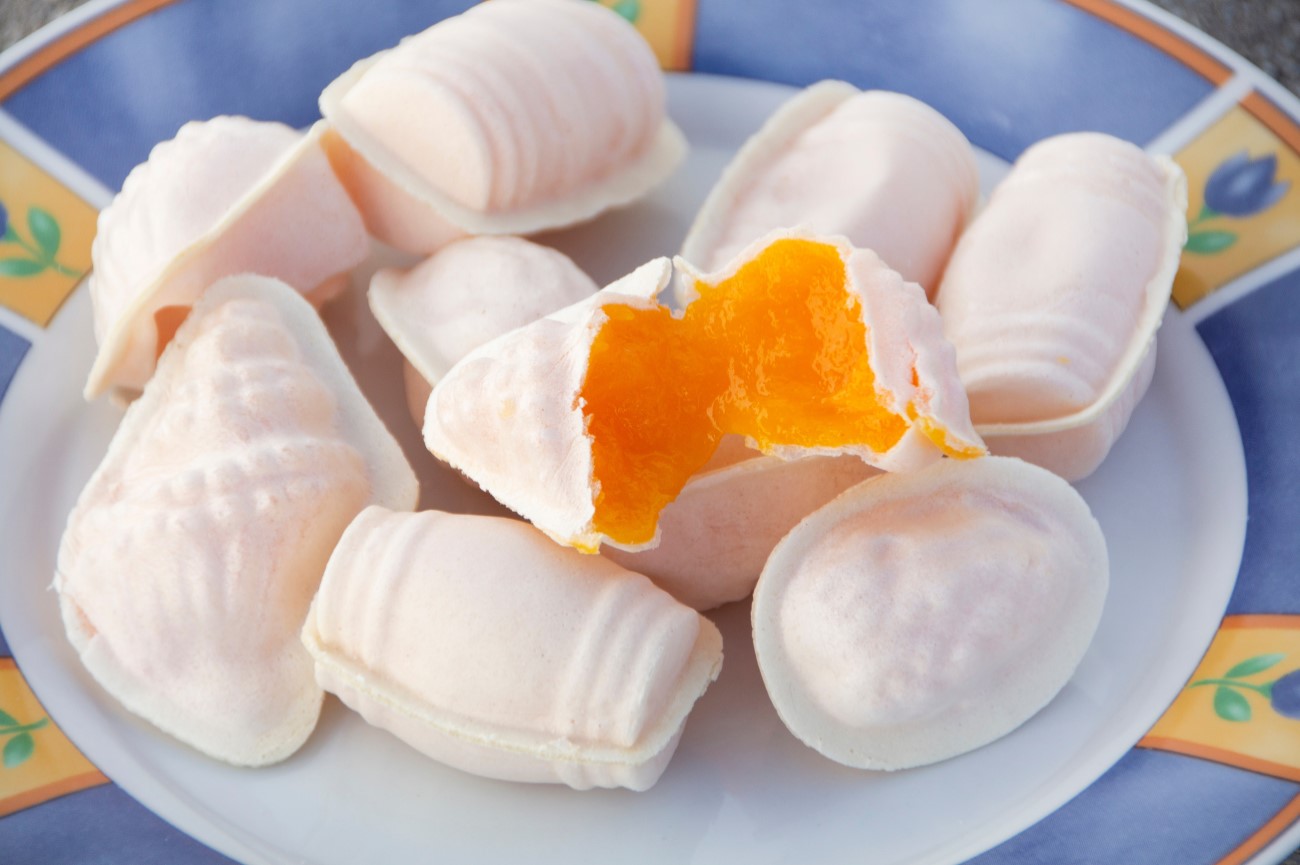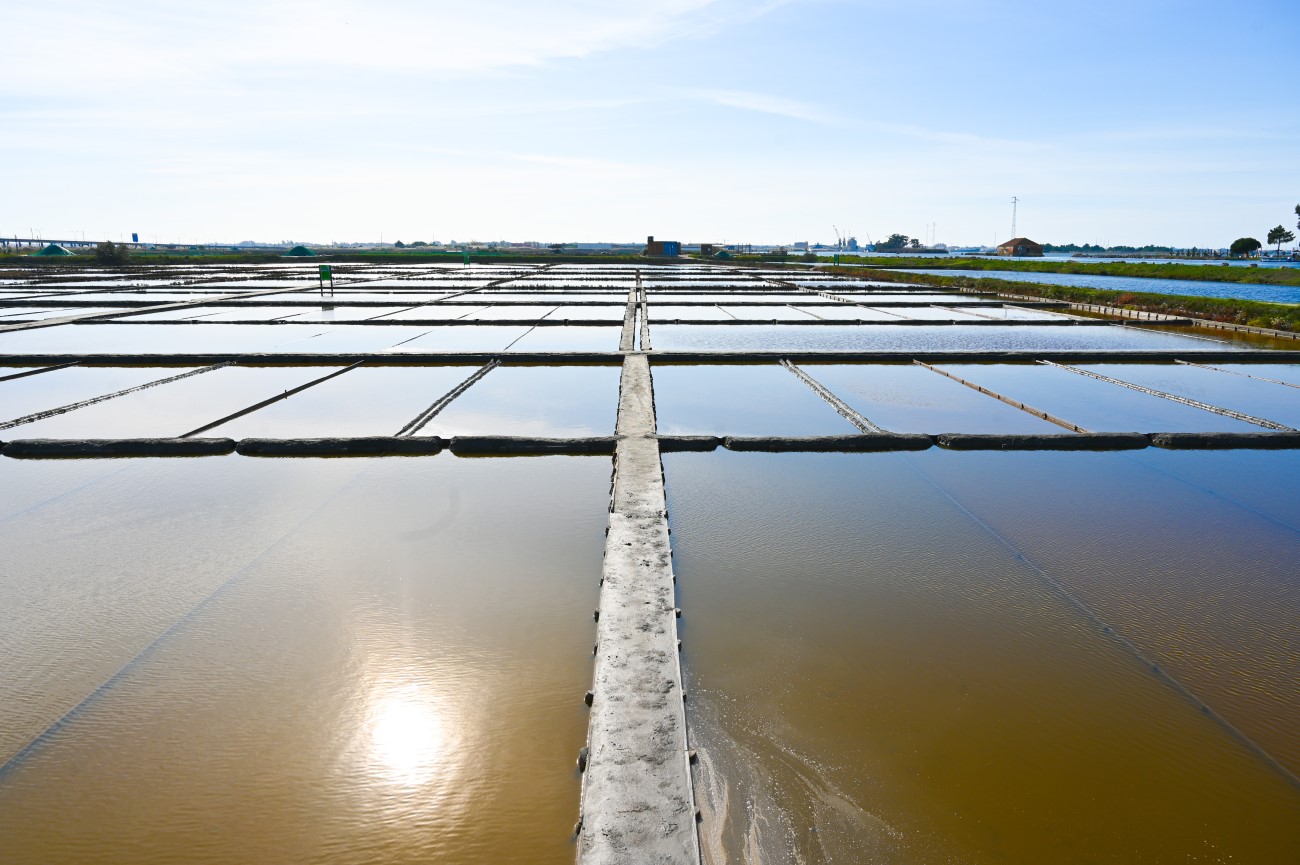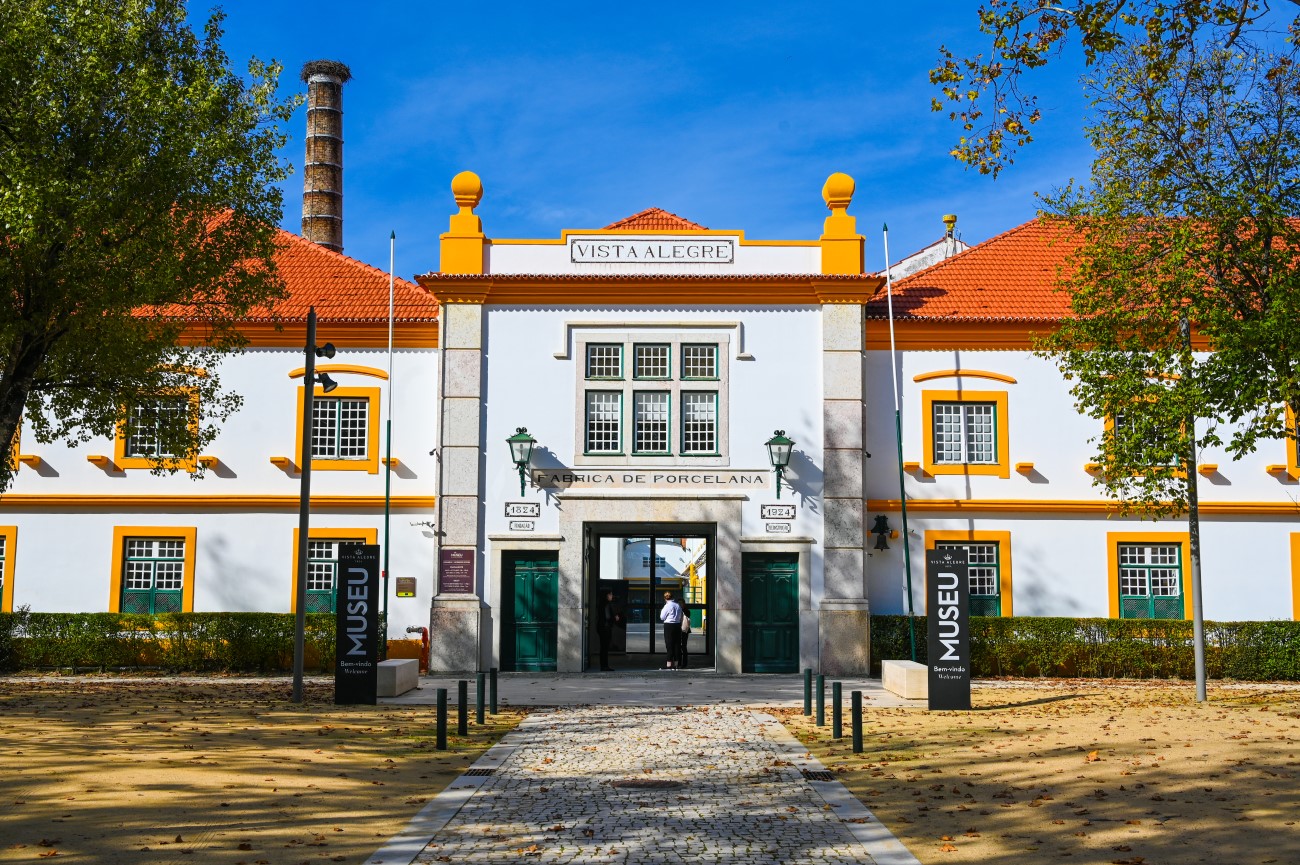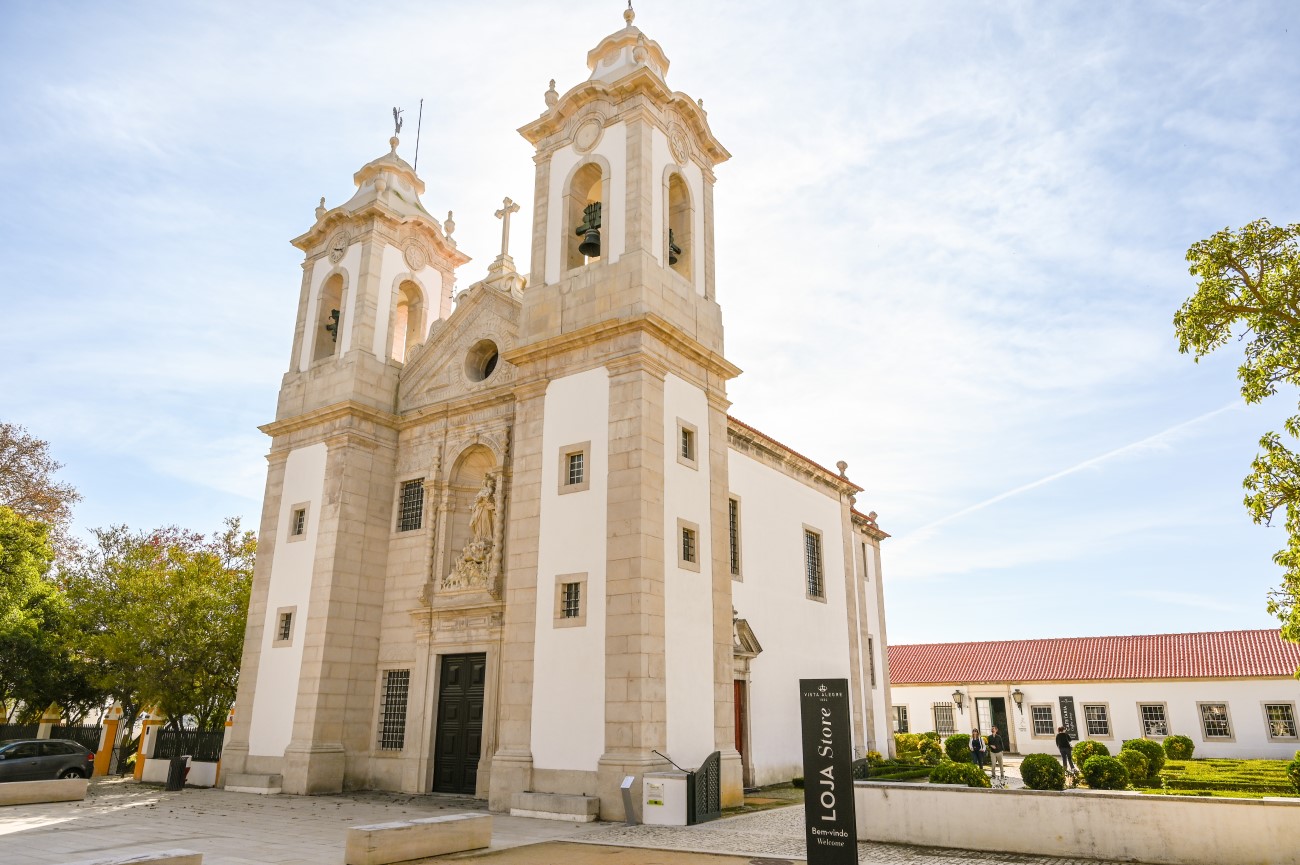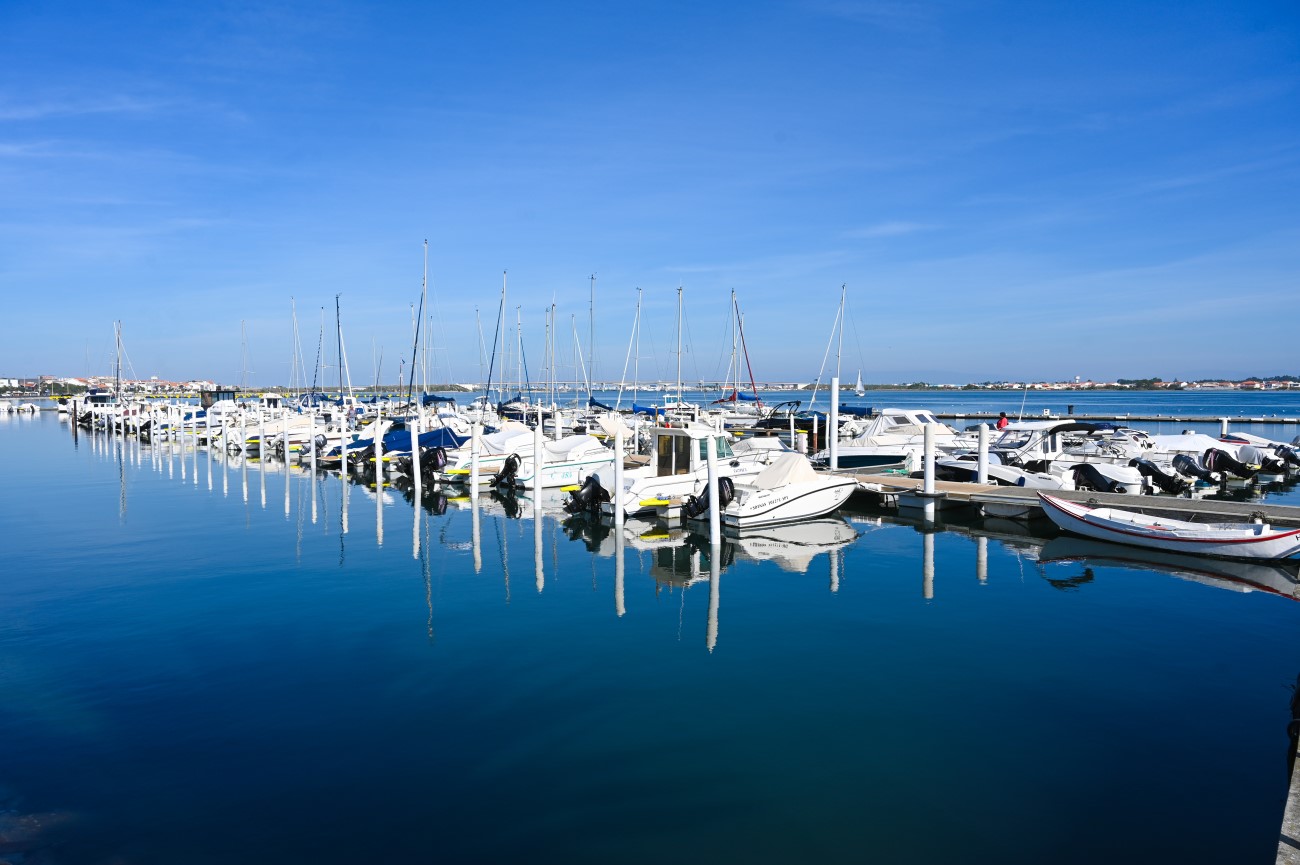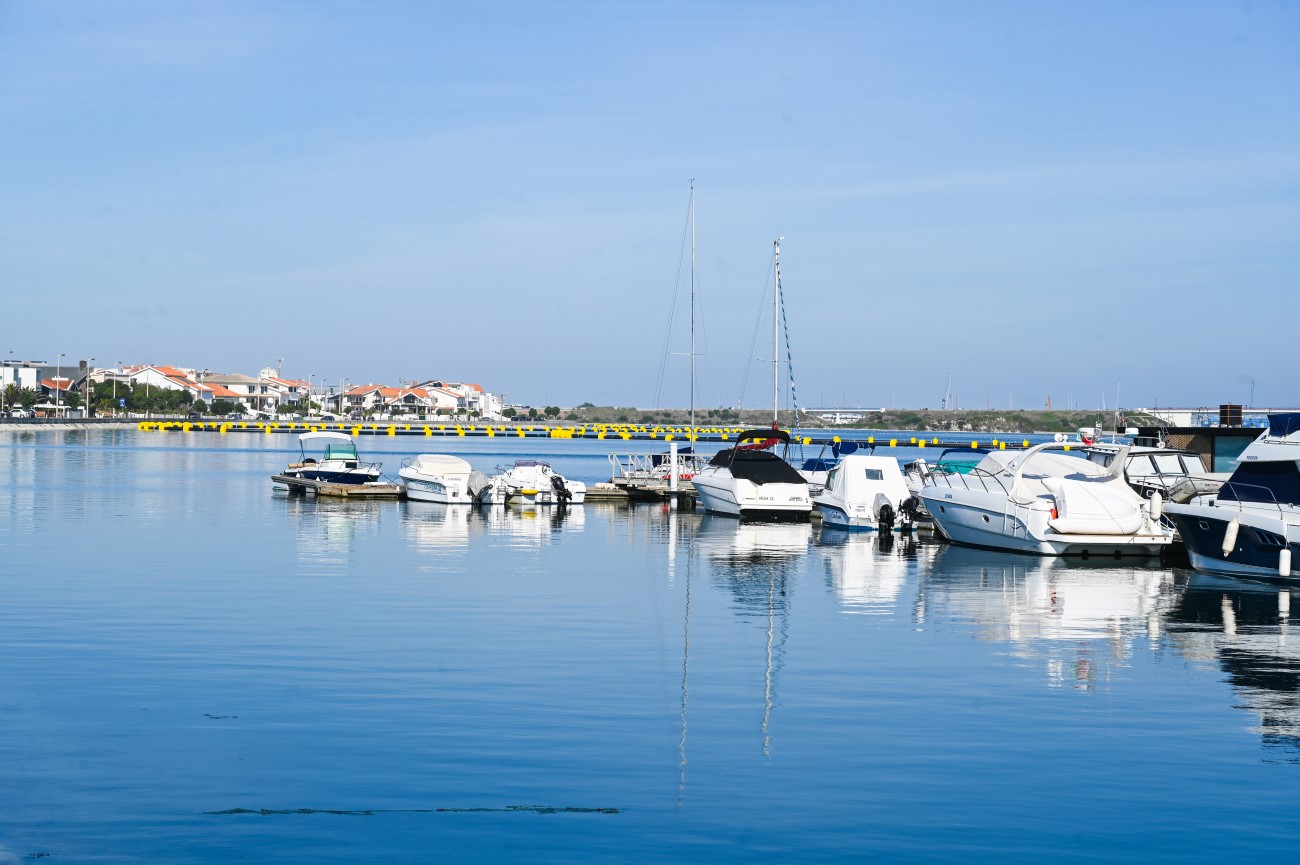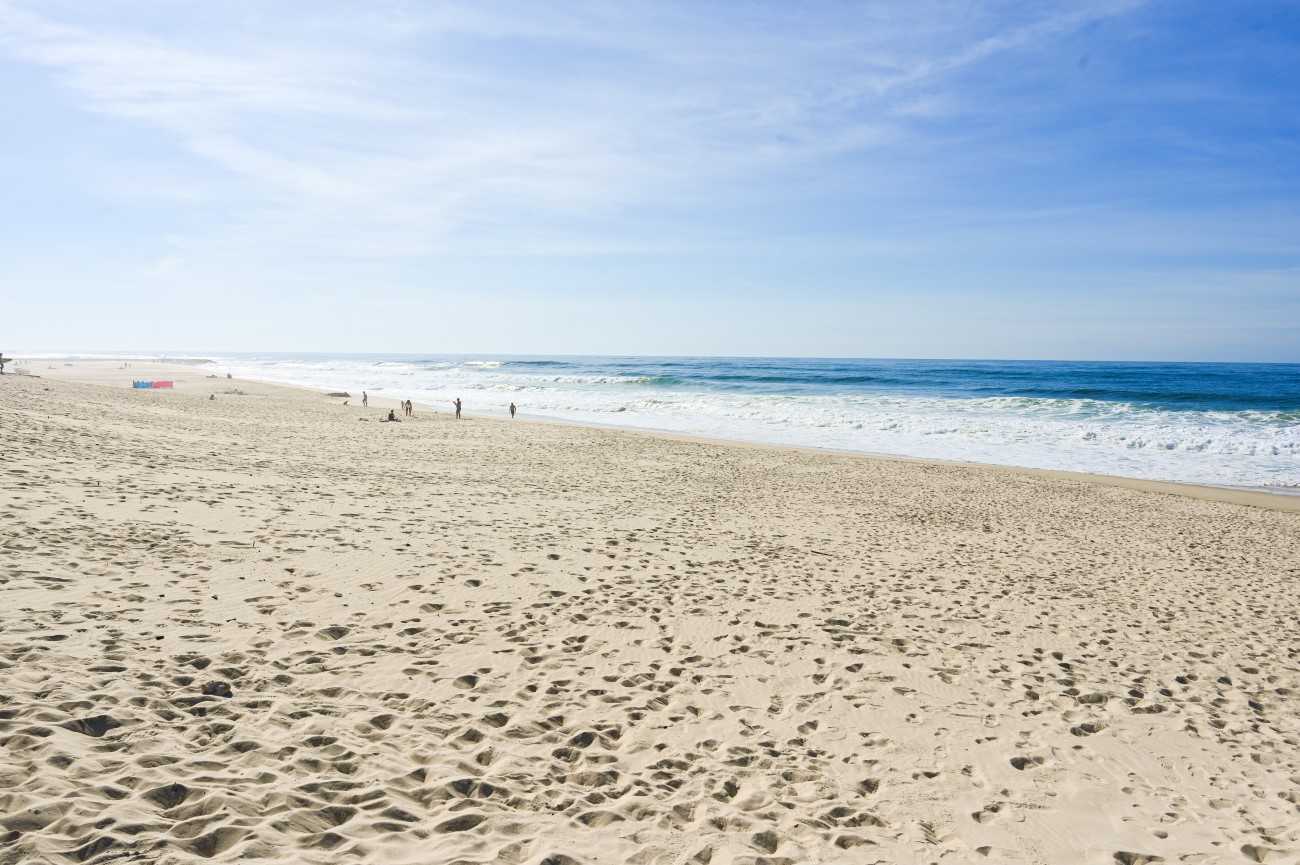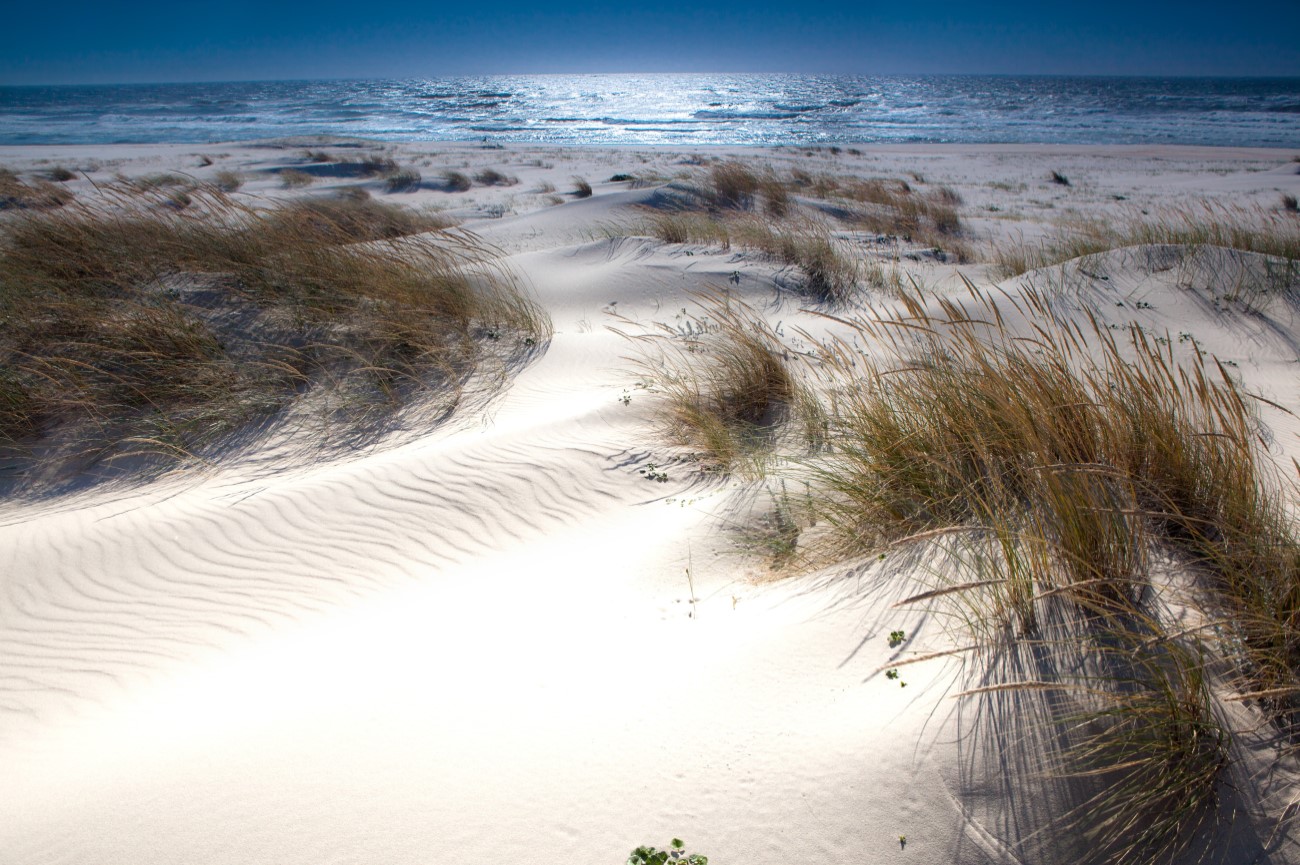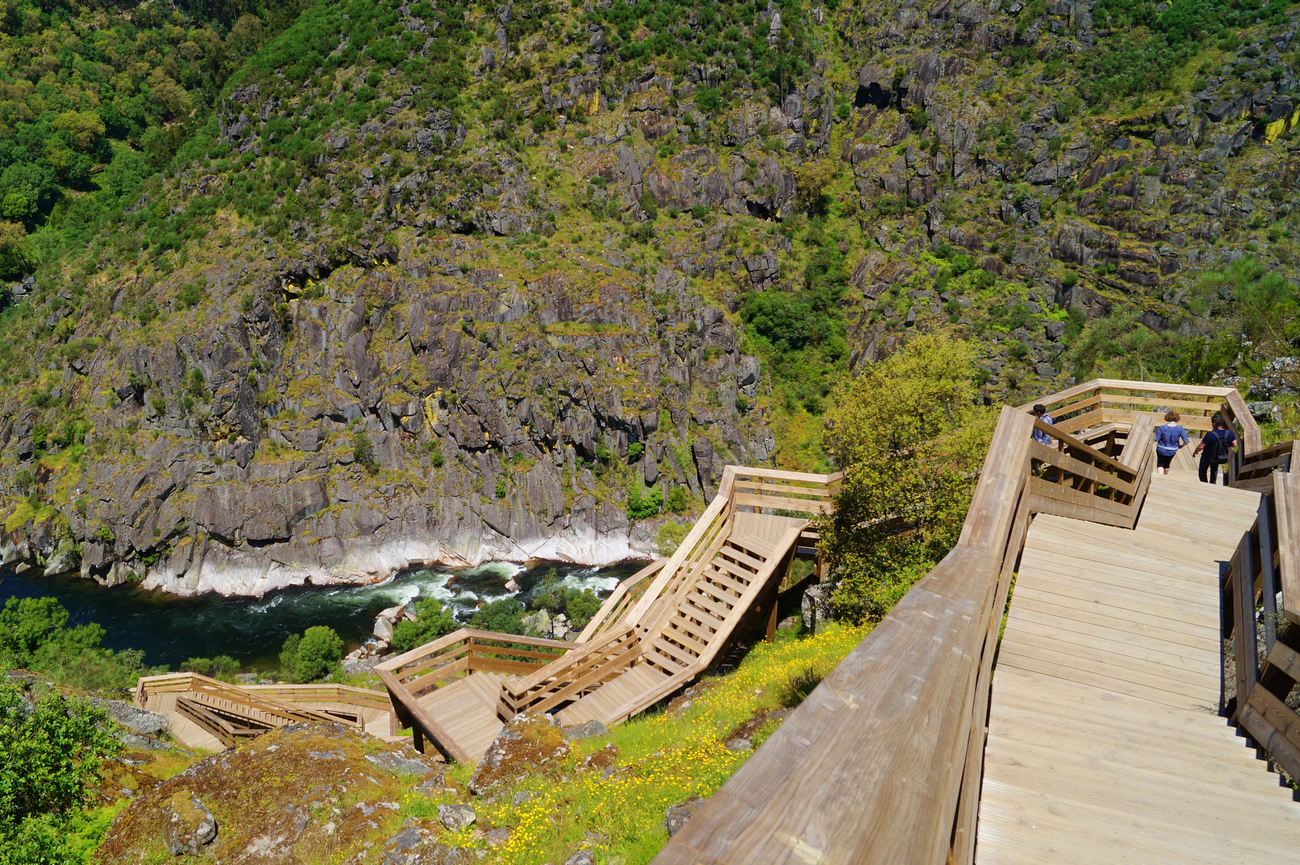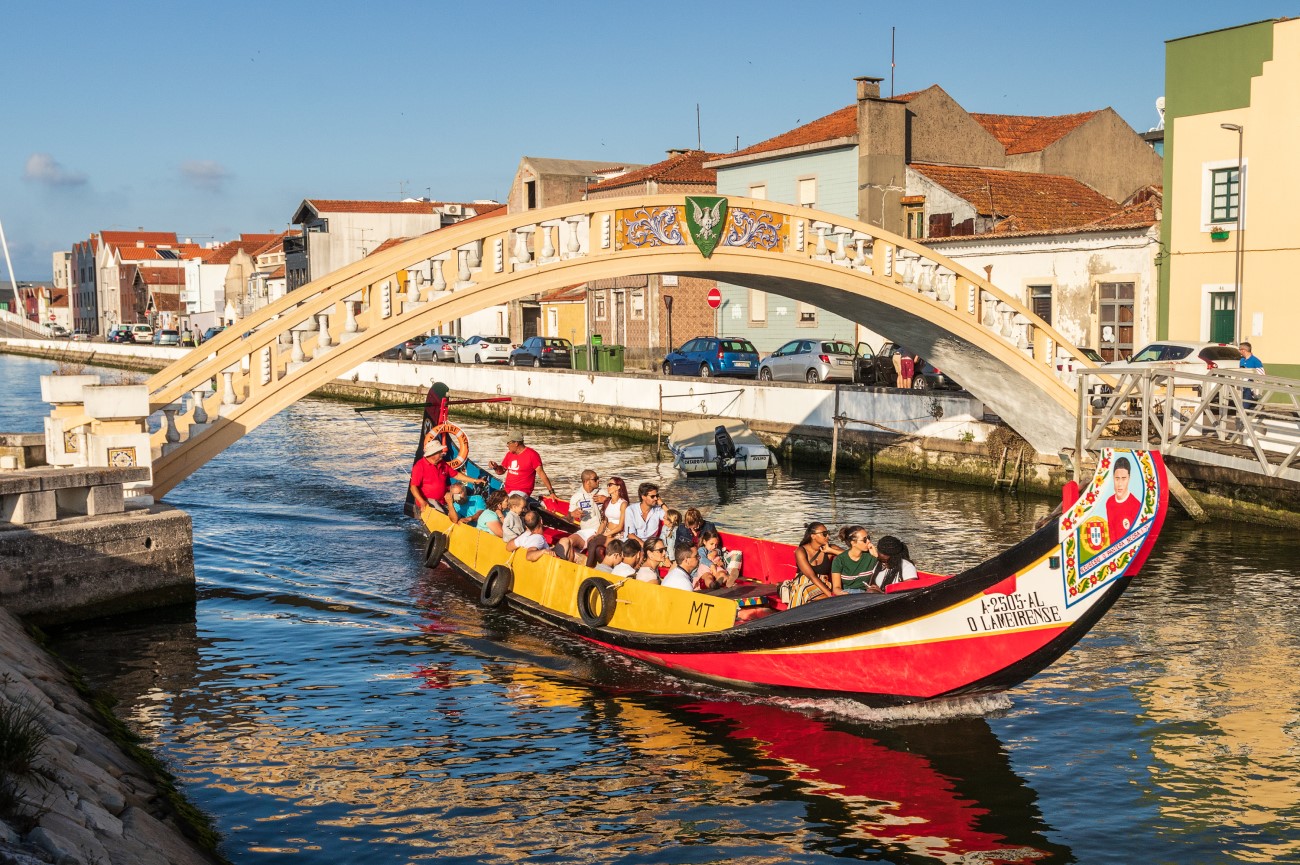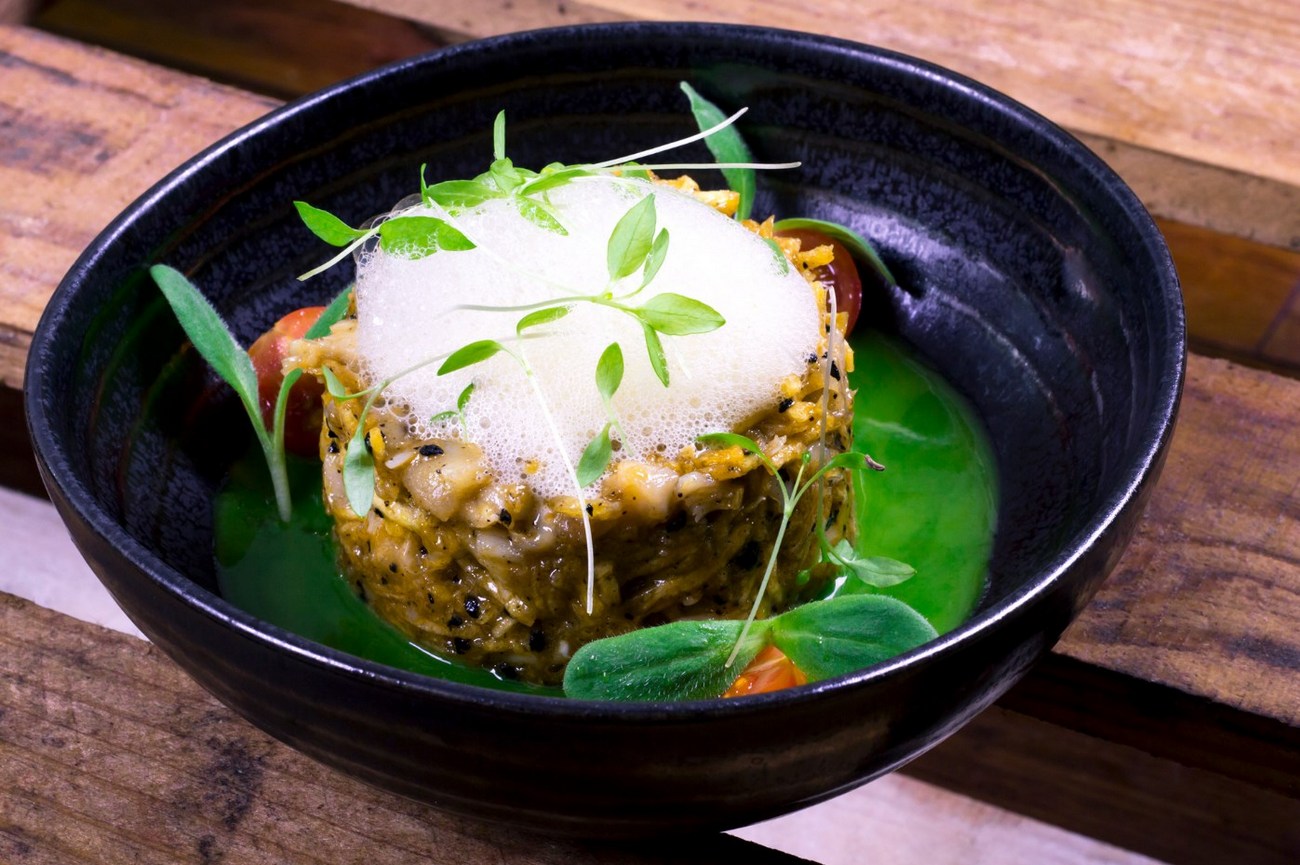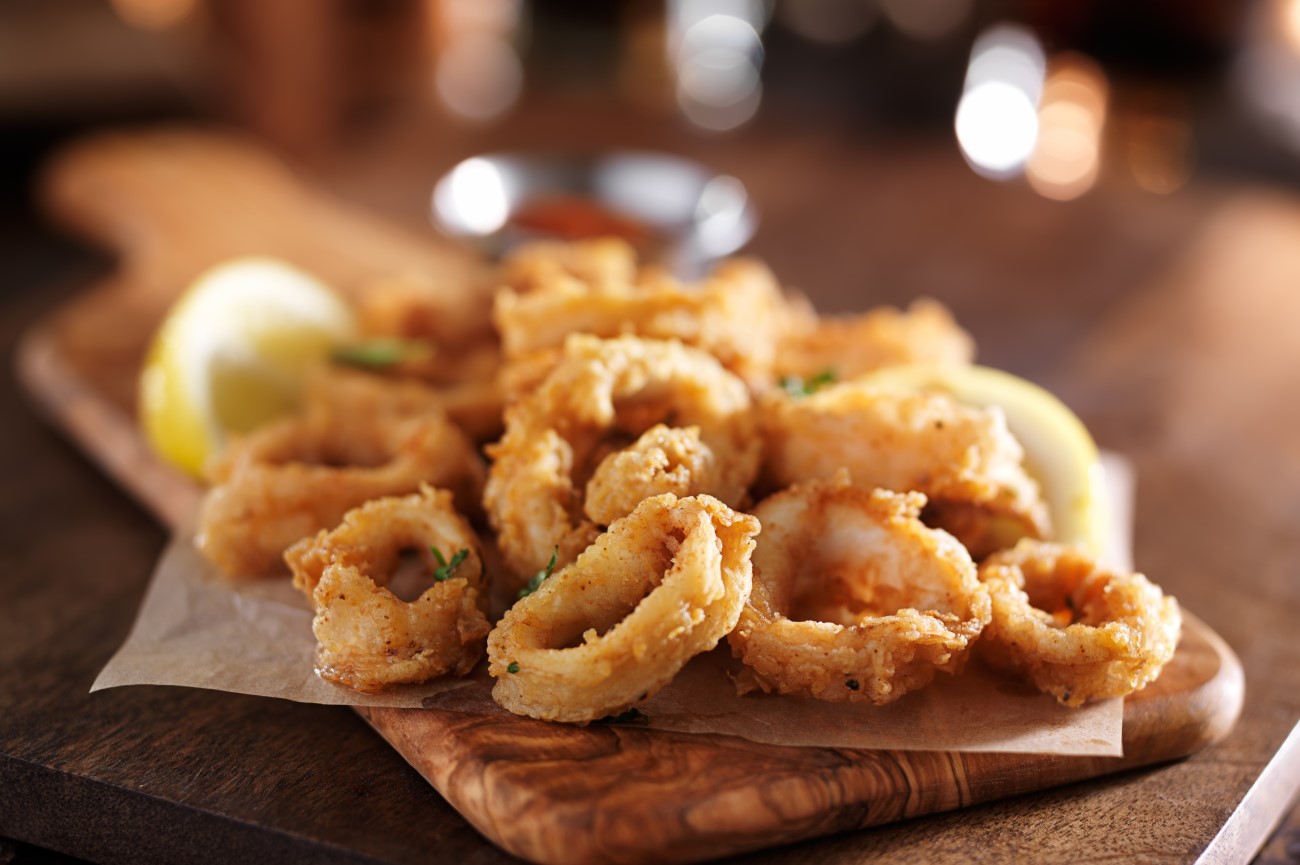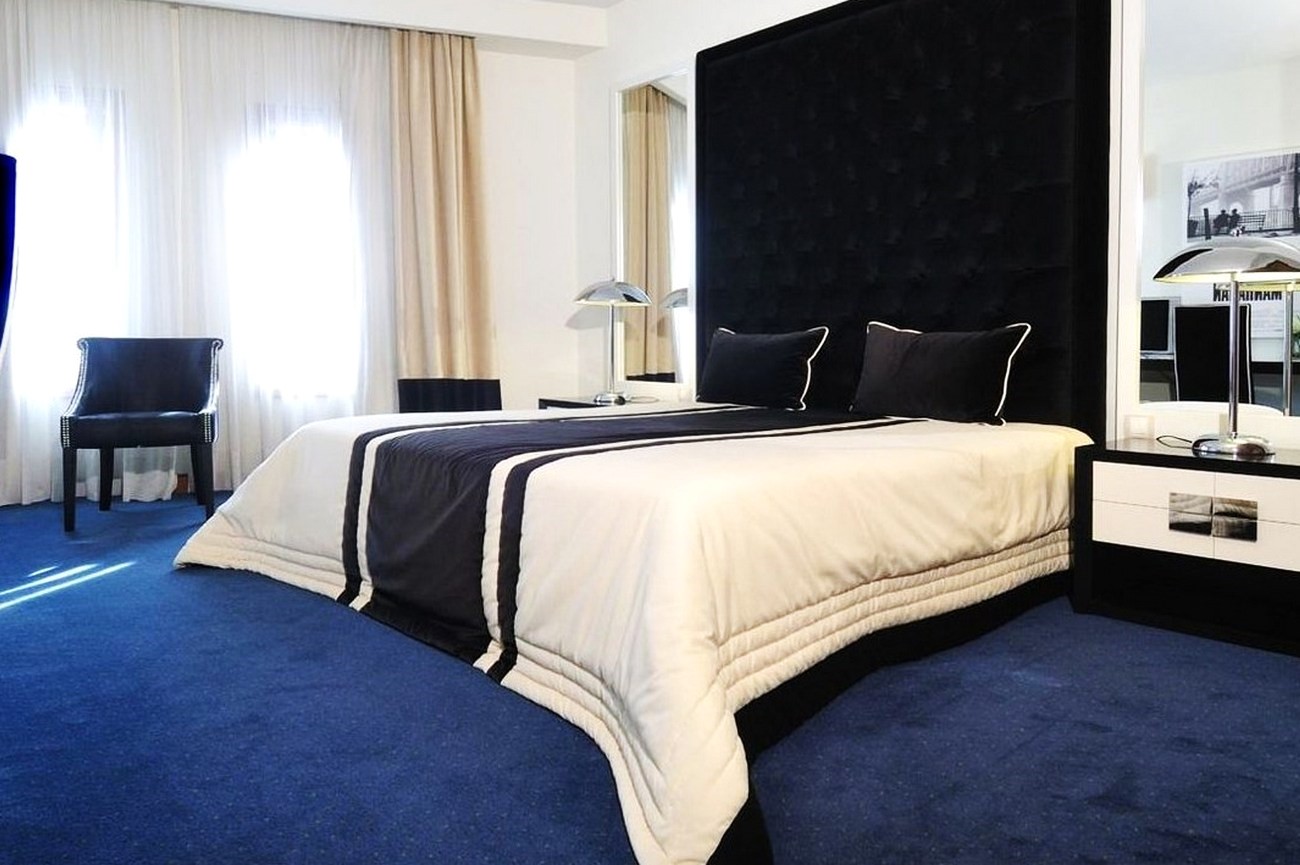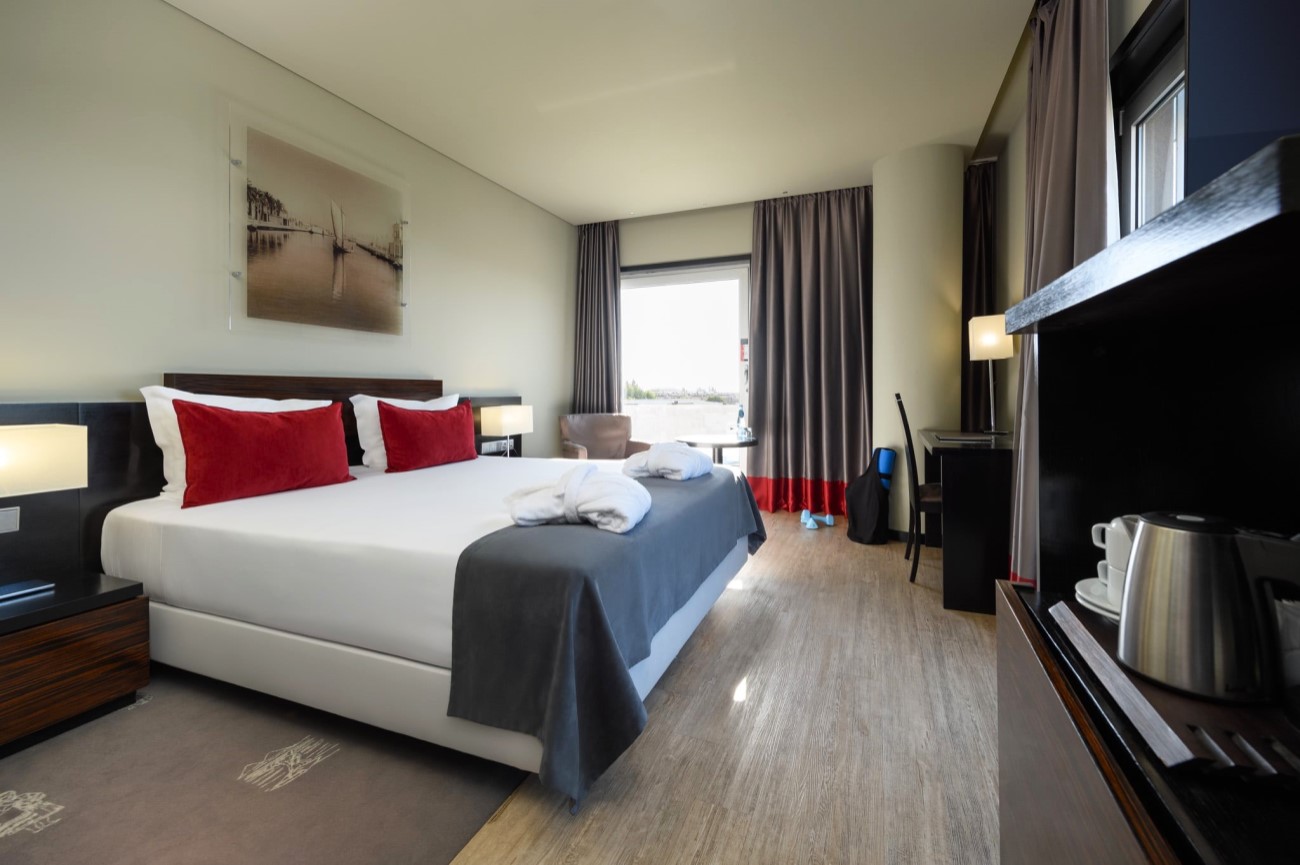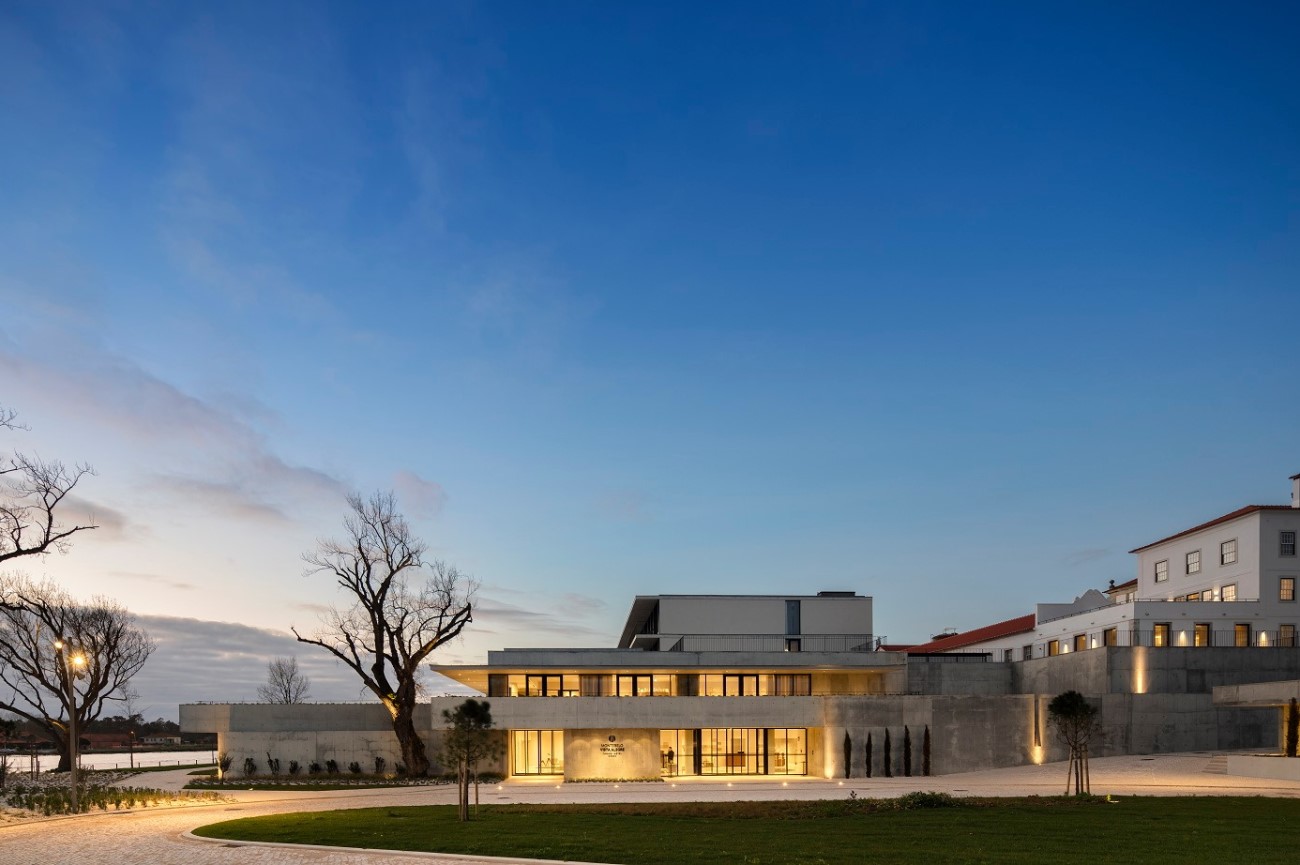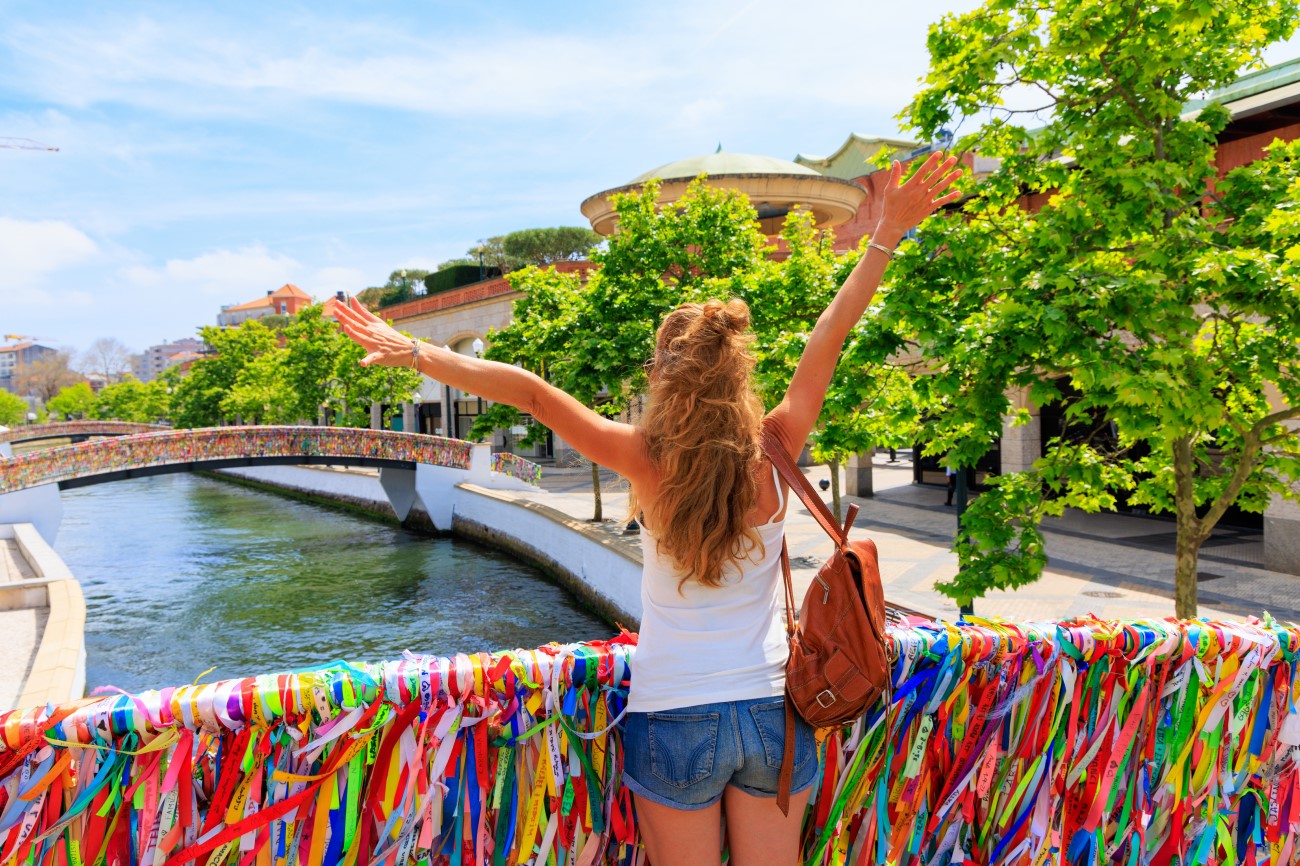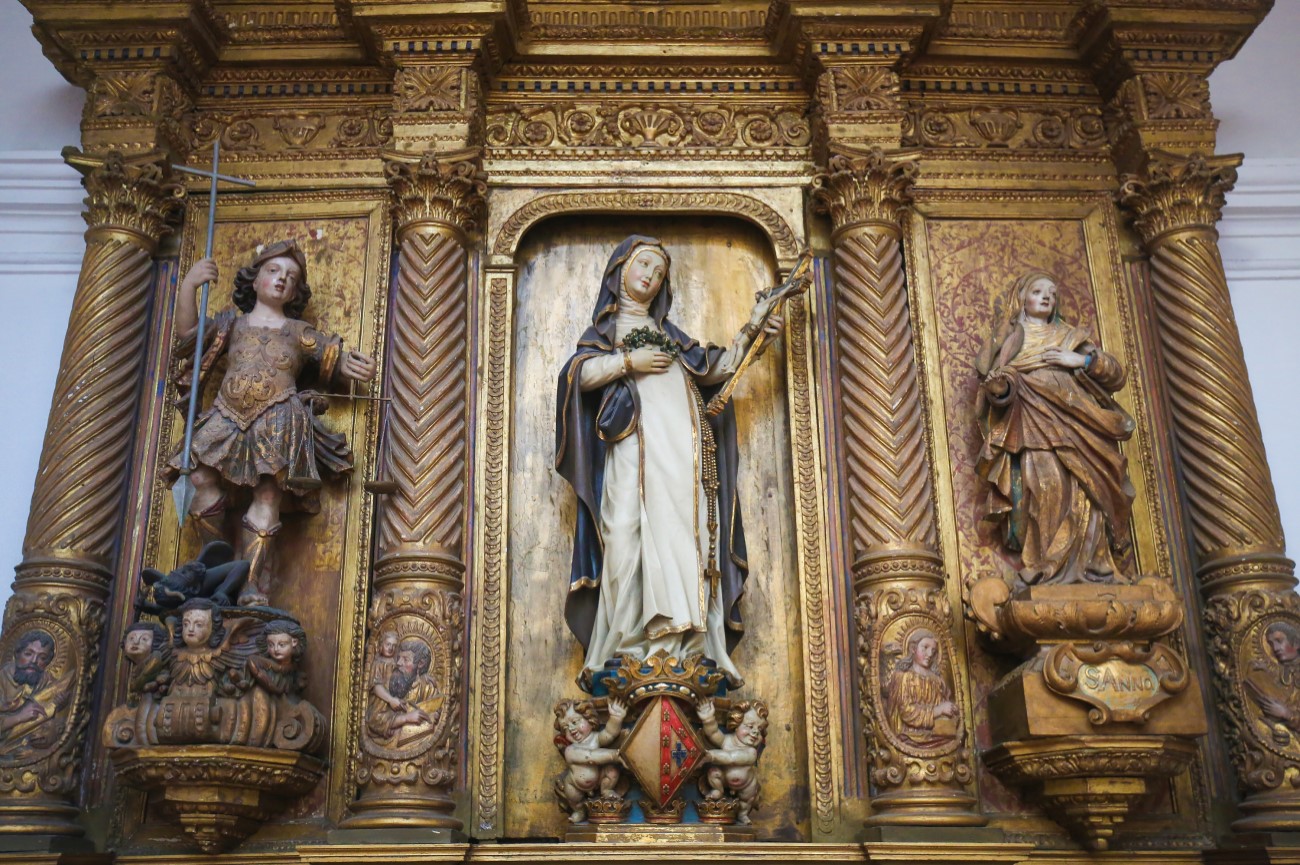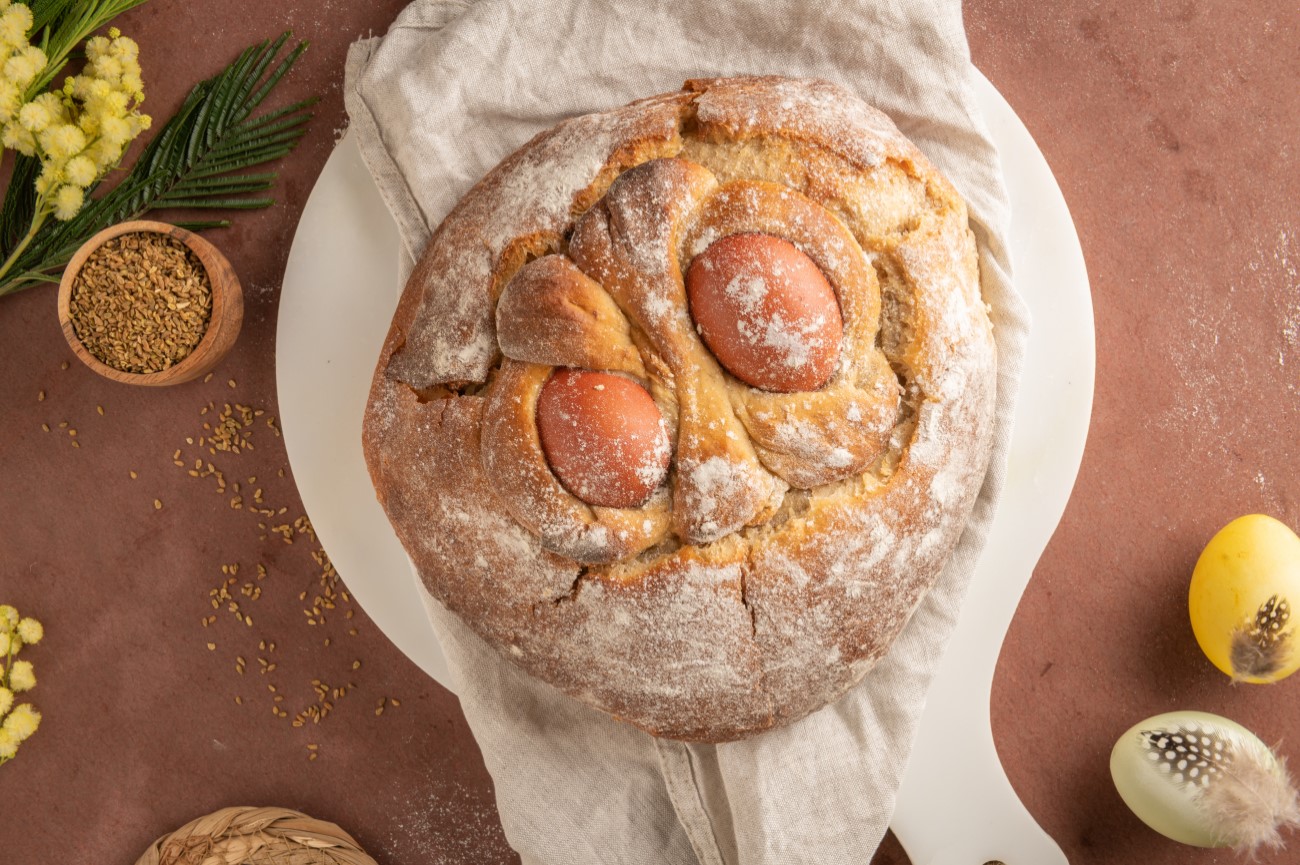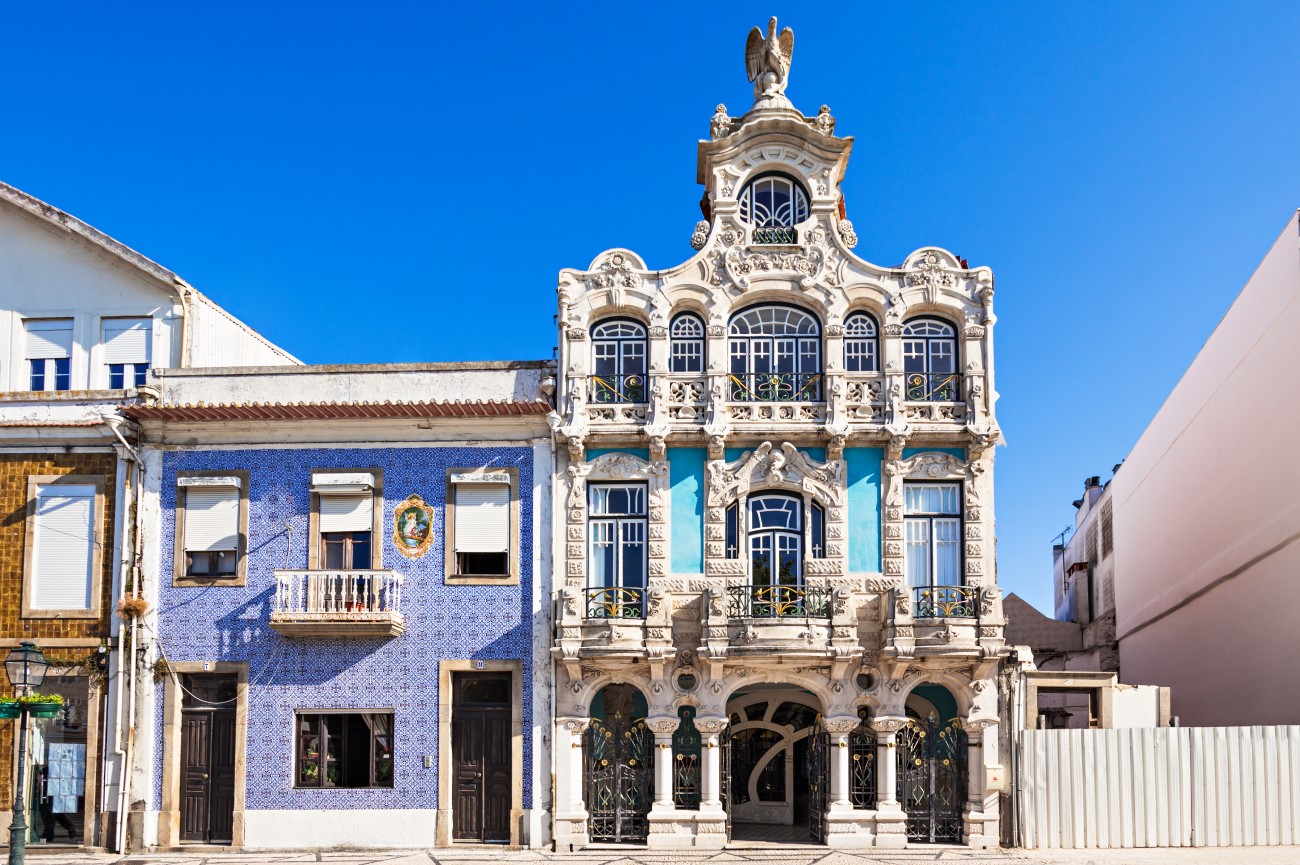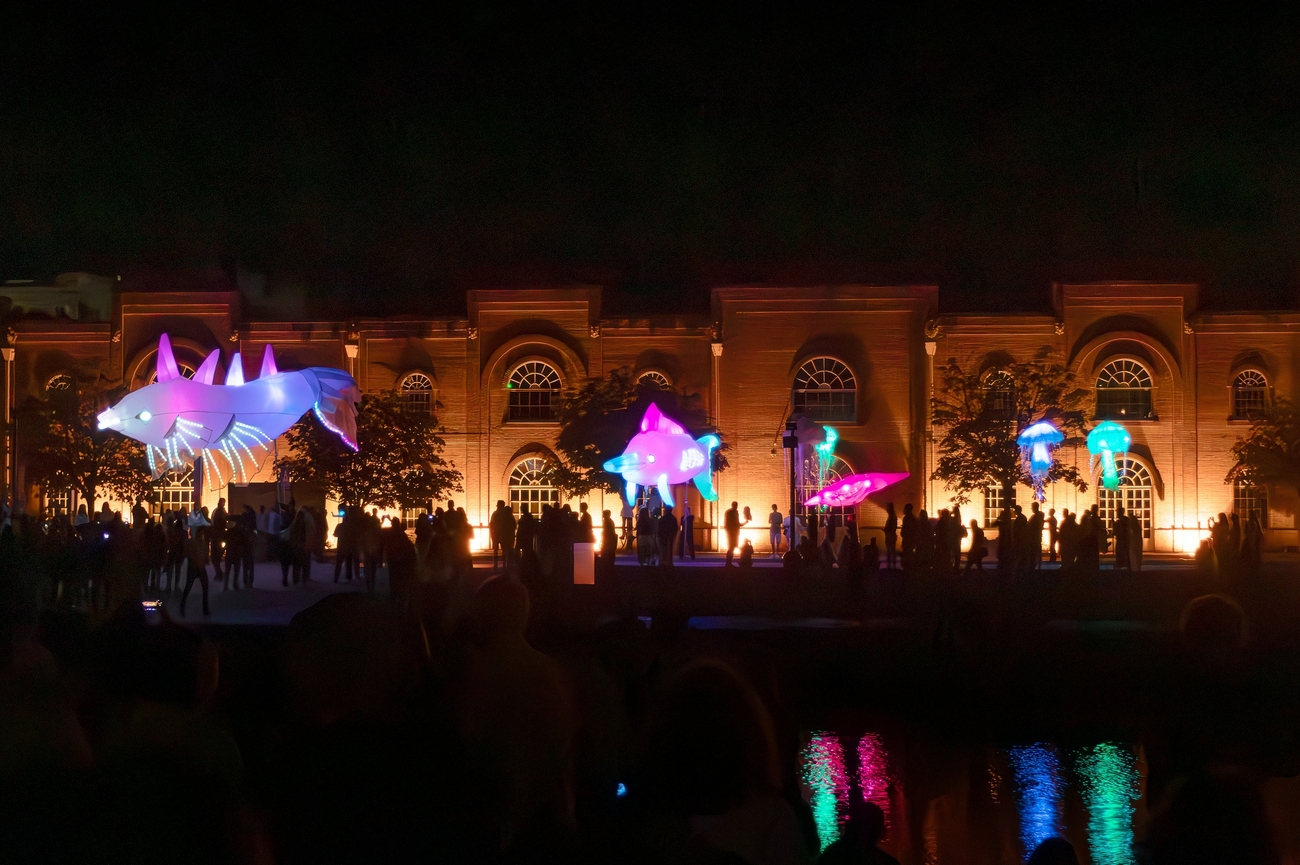Things To Do in Aveiro: 1-Day Itinerary
Aveiro is a city of icons. It’s the chain of canals, the moliceiros and the Art Nouveau buildings that make this one of Portugal’s most picturesque regions.
At first sight, the city is like a mini Venice, with its colourful boats sailing through canals and under a network of bridges. The moliceiro boats were traditionally made for seaweed harvesting, but today they offer canal cruises.
The ocean isn’t far away either, and little towns like Costa Nova attract visitors all year round to its charming striped houses and sandy beaches. Nearby there are nature trails amid dunes and mountains where you can go for a hike or cycle.
Coming from Porto or Lisbon, Aveiro makes for a great day trip. Below is a list of things to do in Aveiro, including tips on where to eat and where to stay.
Day 1

Morning: Visit the Aveiro Museum
Start your tour of the city with a visit to the Aveiro Museum. Housed in a 15th-century monastery known as Mosteiro de Jesus, it contains a vast collection of religious items, including Renaissance paintings, sculptures and jewellery. Portuguese Princess Joana stayed here during the last years of her life, and you can find her beautifully carved tomb in one of the rooms. The museum also features a chapel decorated with gilded woodwork and tile panels depicting the life of the princess.
Take a Moliceiro Tour
One of the first things you’ll see when you arrive in Aveiro is the moliceiros. These colourful boats are a bit similar to the Italian gondolas and have become an iconic city feature. It’s because of these, and the numerous bridges, that Aveiro is sometimes called the Portuguese Venice. Before it became a tourist attraction, the moliceiros were made to harvest seaweed from the lagoon, which was used as a fertiliser. When the trade ended, the boats took on a different life and now offer tours of the city. There’s no need to book a trip in advance. You can show up at the dock and hop on a boat straight away.
Capture the Art Nouveau Buildings
Facing the canals are a series of stunning Art-Nouveau buildings which stand out with their wrought-iron balconies and colourful façades. You’ll probably spot some of them during your boat tour, but there’s also an Art Nouveau walking route that will take you along these properties. Highlights include the Art Nouveau Museum, Casa dos Ovos Moles and the Antiga Casa da Cooperativa Agrícola located at Rua João Mendonça number 7. When you’re done capturing the buildings, you can relax at Jardim do Rossio, a small park lined with palm trees with views of the canals.
Try Ovos Moles and Tripas de Aveiro
Ovos moles are the traditional sweet of Aveiro. You can’t leave the city without trying this delicious local delicacy made of egg yolks and sugar. It’s available in tiny wooden barrels, but the most popular version comes inside rice paper casings shaped like shells. Several pastry shops sell ovos moles around the city, but Maria da Apresentação is one of the best places to get them. If you want to learn how to make them, you can join a workshop at Oficina do Doce.
Another sweet that comes from Aveiro is the tripas. These are kind of similar to a crepe but made with a thicker dough. You can try them at Tezero with a variety of fillings, including jam, chocolate or the beloved ovos moles.
Day 1, Morning - AveiroTour Map
Afternoon: the Salt Pans at the Ecomuseu Marinha da Troncalhada
On the edge of Aveiro’s lagoon, you’ll find many salt pans. These are part of the Marinha da Troncalhada, an open-air museum that showcases the traditional methods of salt production. You can take a walk around the salt pans and read the panels or book a guided tour for more detailed information. Near the museum is a small salt pool and spa established by Cale do Oiro, which runs between May and October. For a couple of euros, you can enjoy a relaxing salt bath while watching the saltern workers.
Visit the Ílhavo Maritime Museum
A few miles south from Aveiro is the town of Ílhavo. It’s home to a modern Maritime Museum showcasing Portugal’s maritime history with a focus on its codfish trade. The building itself has earned many awards for its striking design created by architects Nuno Mateus and José Mateus. Inside, there is a replica of a boat used for cod fishing, but the main draw is the aquarium featuring the Atlantic cod. You can combine your visit with a tour of the Santo André ship museum, docked near Praia da Barra.
Admire Portuguese Ceramics at the Museu Vista Alegre
Another museum worth visiting in Ílhavo is the Museu Vista Alegre. Vista Alegre is a renowned brand of Portuguese ceramics, and this museum holds one of the finest collections of porcelain work in the country. During your visit, you’ll learn about the history of Vista Alegre, its production process, and the role of porcelain in Portuguese society along the centuries. There are over 30,000 items on display, some dating back to 1824 when the factory opened. Besides the exhibition area, the complex also includes a 17th-century chapel, the old worker’s neighbourhood, and a workshop where you can admire the delicate process of hand painting ceramics.
Relax by the Beach
After wandering around the museums, head to the coast and relax in one of Aveiro’s beaches. The closest one is Praia da Barra, located 10 km from the city, where the Aveiro lagoon meets the ocean. On the north end, it has calm waters for bathing, while the southern part is a favourite spot for surfing. There’s a surf school here if you need a lesson. Standing at the edge of the beach is the Farol da Barra, which is the tallest lighthouse in Portugal at 62 metres.
Further down the coast is Costa Nova, an old fishing village famous for its colourful striped cottages known as palheiros. It’s where fishermen used to stock their gear, but now they’re mostly used as holiday homes. Just opposite the road is the beach of Costa Nova where you can go for a swim.
Beyond the beaches, Aveiro’s coastal stretch is full of bars and seafood restaurants that get crowded in the summer. If you make it to Costa Nova, it’s worth visiting the Mercado do Peixe, a lively fishing market with fresh fish and seafood caught in the lagoon or the sea. Check the schedule before you go to make sure it’s open.
Day 1, Afternoon - Aveiro Tour Map
Things to do near Aveiro
If you’re staying in Aveiro for a couple of days, there are a few places nearby that deserve a visit, such as Dunas de São Jacinto, Passadiços de Aveiro, or Sever do Vouga.
Stretching for nearly
700 hectares, Dunas de São Jacinto is a stunning natural reserve made
up of beaches, pine woods and freshwater ponds. This sandy stretch sits
right between the Aveiro lagoons and the Atlantic, and it’s an ideal
spot for hiking and birdwatching.
Just a 10-minute drive from the city is the Passadiços de Aveiro. Set alongside the Ria de Aveiro, this wooden walkway extends for more than 7km. It takes around two hours to complete the trail on foot, but you can also cycle through it. The path begins at Cais de São Roque and ends in Vilarinho near the Vouga river. On the way, you’ll pass by salt marshes and pine trees and spot many bird species, such as little terns and black-winged stilts. If you want a shorter route, you can end the hike at Cais da Ribeira da Esgueira.
Another place worth exploring near Aveiro is Sever do Vouga. In this municipality, you’ll find waterfalls, viewpoints and an eco-trail that passes through an old railway bridge overlooking the river.
Things to do with kids in Aveiro
Aveiro offers plenty of family-friendly activities. Kids can learn how to make the traditional ovos moles sweets with a workshop at the Oficina do Doce. Of course, you can also sample them at one of the city’s many pastry shops. Taking a moliceiro tour along the canals is a fun way to explore Aveiro. You can also take advantage of the city’s bike network and cycle along the waterfront.
On the city’s outskirts is the Fábrica – Centro de Ciência Viva, an interactive science centre with a variety of exhibits covering topics such as robotics, chemistry and maths. Nearby is the Parque Infante Dom Pedro, a large park with a playground, ponds and picnic areas.
A bit further, you can visit the Museu do Brincar, a playing museum featuring a collection of toys from several eras. In Ílhavo, you can spot Atlantic cod at the aquarium in the Maritime Museum or admire the vast ceramic collection at the Vista Alegre Factory.
You can also hit the surrounding beaches of Praia da Barra and Costa Nova for a refreshing swim in the summer.
Where to eat in Aveiro
There are many restaurants in Aveiro where you can go for lunch or dinner. We recommend these three: Salpoente, Marisqueira Maré Cheia and Subenshi Sushi. Housed in a former salt warehouse, Salpoente serves traditional Portuguese dishes with a contemporary twist. Salted cod is the star of the menu, along with other specialities based on local ingredients such as oysters and marinhoa beef.
A bit closer to the centre, you’ll find the Marisqueira Maré Cheia, one of the most popular seafood restaurants in Aveiro. It’s usually quite busy, so you should book a table in advance. Specialities include grilled fish, seafood rice and the big seafood platter, which is perfect for sharing.
For something a bit less traditional, try Subenshi Sushi, one of the best sushi restaurants in Portugal. During the week, there’s an affordable lunch menu which can feature anything from sushi sets to noodles and tempura.
Where to stay in Aveiro
If you decide to spend the night in Aveiro, we suggest booking a room at Hotel Moliceiro, Melia Ria or the Montebelo Vista Alegre Ílhavo Hotel.
Set in the heart of Aveiro, Hotel Moliceiro offers 49 rooms, most of them overlooking the city’s canals. Its central location allows you to explore all the main attractions on foot, but if you want, you can also rent a bike at the reception.
Open since 2005, Melia Ria is a 4-star hotel located on the edge of the Ria de Aveiro. It’s only a
few minutes from the train station and the historic centre. There’s a
restaurant on-site, as well as a spa, an indoor pool and a fitness
centre.
A bit further out in Ílhavo is the Montebelo Vista Alegre. This 5-star hotel is a homage to Vista Alegre, a brand of traditional Portuguese ceramics. Every room is decorated with porcelain art, and during your stay, you can participate in ceramic workshops or visit the Vista Alegre museum. There are also other facilities such as a spa, an indoor pool and an outdoor pool overlooking the Boco river.
How to get from Lisbon to Aveiro
There are three ways to get from Lisbon to Aveiro:
- By car - You can drive from Lisbon to Aveiro following the A1 or the A17. The journey takes around 2 hours and 30 minutes. If you bring the car, you can visit other places nearby, like Costa Nova and Sever do Vouga.
- By train - If you don’t have a car, the best way to travel to Aveiro is to get a train. You can catch it at the Santa Apolónia station (blue metro line) or Oriente (red metro line). It will take you around 2 hours and 30 minutes to get from Lisbon to Aveiro. Tickets cost between €20 to €40, but you can get discounts if you purchase them at least a week in advance.
- By bus - There is a bus service between Lisbon and Aveiro, but the journey takes a lot longer. The bus departs from the Sete Rios station (blue metro line), near Lisbon’s zoo. Tickets cost around €16. It can take between three to four hours to travel between both cities, so it’s not the best option when compared to the train.
Best time to visit Aveiro
Summer is the busiest season in Aveiro. It's the best time to visit if you want to take advantage of the nearby beaches like Costa Nova and experience local festivals like the Festival dos Canais. If you prefer cooler temperatures, you can come in spring or autumn instead. There will be fewer crowds, plus you’ll save on accommodation, as the rates tend to be lower around this time. Winter is much quieter, with the occasional rain pour, but still pleasant enough to explore the city.
Aveiro Festivals
- Festividades de Santa Joana: In May, Aveiro honours its patron saint, Santa Joana, with a religious procession, concerts and exhibitions.
- Semana Santa: During Easter, the city hosts a variety of activities, including guided tours to religious monuments and classical music concerts.
- Festa Arte Nova: Around early June, Aveiro celebrates its Art Nouveau heritage with guided tours, concerts and performances. Visitors also have free access to the Art Nouveau Museum during the event.
- Festival dos Canais: In July, Aveiro’s canals became a stage for live performances and art exhibits for this annual festival.


